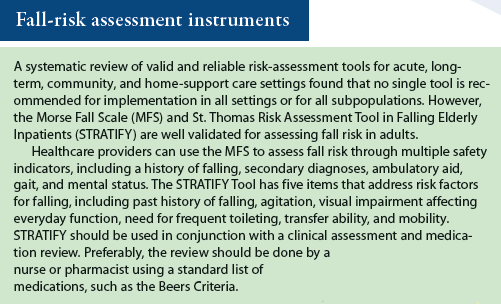Not known Details About Dementia Fall Risk
All about Dementia Fall Risk
Table of ContentsUnknown Facts About Dementia Fall RiskThe Definitive Guide to Dementia Fall RiskOur Dementia Fall Risk PDFsDementia Fall Risk Can Be Fun For Anyone
An autumn threat assessment checks to see just how likely it is that you will fall. The assessment normally includes: This consists of a collection of concerns concerning your total wellness and if you have actually had previous drops or problems with equilibrium, standing, and/or strolling.STEADI includes testing, assessing, and intervention. Interventions are recommendations that may minimize your risk of falling. STEADI consists of three steps: you for your threat of succumbing to your threat variables that can be enhanced to attempt to stop falls (for example, equilibrium troubles, impaired vision) to decrease your risk of dropping by using efficient methods (for instance, supplying education and resources), you may be asked numerous concerns including: Have you fallen in the previous year? Do you feel unstable when standing or walking? Are you stressed over dropping?, your company will certainly evaluate your strength, balance, and gait, using the complying with fall assessment tools: This test checks your stride.
Then you'll take a seat again. Your company will certainly inspect how much time it takes you to do this. If it takes you 12 seconds or even more, it may suggest you are at higher danger for an autumn. This test checks strength and balance. You'll sit in a chair with your arms crossed over your breast.
Relocate one foot midway ahead, so the instep is touching the huge toe of your other foot. Relocate one foot completely in front of the various other, so the toes are touching the heel of your other foot.
Dementia Fall Risk for Beginners
A lot of falls occur as a result of numerous contributing elements; consequently, managing the threat of falling starts with determining the factors that add to drop threat - Dementia Fall Risk. Some of one of the most relevant risk aspects include: History of previous fallsChronic medical conditionsAcute illnessImpaired stride and equilibrium, lower extremity weaknessCognitive impairmentChanges in visionCertain risky drugs and polypharmacyEnvironmental variables can also raise the danger for falls, consisting of: Inadequate lightingUneven or damaged flooringWet or unsafe floorsMissing or damaged hand rails and get barsDamaged or poorly fitted tools, such as beds, wheelchairs, or walkersImproper usage of assistive devicesInadequate supervision of the people living in the NF, including those who exhibit hostile behaviorsA effective loss risk monitoring program requires a complete clinical assessment, with input from all members of the interdisciplinary team

The treatment strategy ought to likewise include interventions that are system-based, such as those that promote a risk-free atmosphere (proper lights, go to this site hand rails, get hold of bars, and so on). The performance of the interventions must be examined occasionally, and the treatment strategy changed as essential to reflect changes in the fall danger evaluation. Applying an autumn risk administration system making use of evidence-based ideal technique can minimize the frequency of drops in the NF, while limiting the possibility for fall-related injuries.
Things about Dementia Fall Risk
The AGS/BGS standard recommends evaluating all grownups aged 65 years and older for fall danger every year. This screening includes asking individuals whether they have actually fallen 2 or even more times in the past year or looked for clinical interest for a loss, or, if they have not fallen, whether they really feel unstable when strolling.
People who have actually fallen as soon as without injury needs to have their equilibrium and stride assessed; those with stride or balance problems should obtain additional assessment. A history of 1 fall without injury and without stride or balance troubles does not warrant further assessment past continued yearly fall danger testing. Dementia Fall Risk. An autumn risk assessment is called for as part of the Welcome to Medicare assessment

Dementia Fall Risk Fundamentals Explained
Recording a drops history is among the quality indications for autumn prevention and administration. A critical part of risk assessment is a medicine testimonial. A number of courses of medications increase loss threat (Table 2). Psychoactive drugs particularly are independent predictors of falls. These drugs tend to be sedating, change the sensorium, and harm equilibrium and gait.
Postural hypotension can commonly be relieved by minimizing the dosage of click for source blood pressurelowering medicines and/or stopping medications that have orthostatic hypotension as an adverse effects. Use above-the-knee assistance tube and resting with the head of the bed boosted might also reduce postural reductions in blood pressure. The preferred aspects of a fall-focused health examination are received Box 1.

A TUG time higher than or equal to 12 seconds suggests high fall risk. Being incapable to stand up from a chair of knee elevation without making use of one's arms shows increased loss danger.